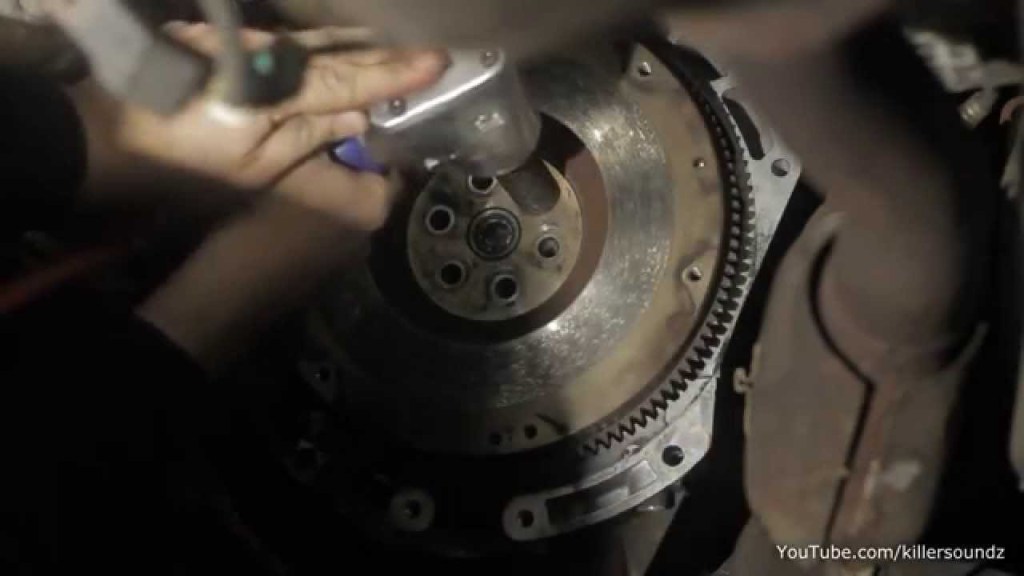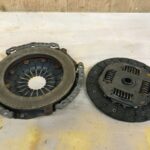Effortlessly Remove The 1993 Ford Ranger Manual Transmission: Master The Process With Our Click To Action Guide!
1993 Ford Ranger Manual Transmission Removal
The 1993 Ford Ranger has long been hailed as one of the most reliable and durable trucks on the market. With its manual transmission, it offers a unique driving experience and the ability to handle tough terrain with ease. However, there may come a time when you need to remove the manual transmission for repairs or upgrades. In this article, we will explore the process of removing the manual transmission from a 1993 Ford Ranger, providing you with a step-by-step guide to successfully complete the task.
What is manual transmission removal?
Manual transmission removal refers to the process of detaching the transmission from the engine and removing it from the vehicle. This is a complex task that requires a certain level of expertise and knowledge about the inner workings of the vehicle. It is often necessary when the transmission needs to be repaired, replaced, or upgraded.
2 Picture Gallery: Effortlessly Remove The 1993 Ford Ranger Manual Transmission: Master The Process With Our Click To Action Guide!
Who should perform manual transmission removal?
Manual transmission removal should ideally be performed by experienced mechanics or individuals with a good understanding of automotive mechanics. This task requires technical know-how and the use of specialized tools. If you are not confident in your abilities or lack the necessary tools, it is best to seek professional assistance to avoid causing further damage to your vehicle.
When should manual transmission removal be done?

Image Source: ytimg.com
Manual transmission removal should be done when there is a malfunction or damage to the transmission that cannot be repaired without removing it from the vehicle. Signs that may indicate the need for transmission removal include difficulty shifting gears, grinding or rattling noises, slipping gears, or leaking transmission fluid. It is important to address these issues promptly to prevent further damage to your vehicle.
Where should manual transmission removal be done?
Manual transmission removal is typically done in a well-equipped automotive repair shop or a suitable workspace with ample space and proper tools. It is essential to have a clean and organized area to prevent loss of small parts and to ensure a safe working environment. If you are attempting the removal at home, make sure you have all the necessary tools and a suitable workspace.
Why is manual transmission removal important?
Manual transmission removal is important to address transmission-related issues and ensure the proper functioning of your vehicle. By removing the transmission, you can access and repair or replace faulty components, such as the clutch, flywheel, or gears. This maintenance task can extend the lifespan of your manual transmission and improve the overall performance of your Ford Ranger.
How to remove the manual transmission from a 1993 Ford Ranger?

Image Source: ytimg.com
Removing the manual transmission from a 1993 Ford Ranger requires a careful step-by-step process. Here is a general guide to help you through the process:
Step 1: Prepare the vehicle
Start by making sure the vehicle is on a level surface and securely supported on jack stands. Disconnect the negative battery cable to prevent electrical shocks. Drain the transmission fluid and remove any components that may obstruct the transmission removal, such as the driveshaft, exhaust system, and crossmember.
Step 2: Disconnect components
Disconnect the clutch linkage and hydraulic lines, if applicable. Remove the shifter assembly and detach the electrical connectors connected to the transmission. Remove any remaining bolts or brackets securing the transmission to the engine.
Step 3: Support the transmission
Using a transmission jack or a suitable support device, carefully raise the transmission to relieve any tension on the mounting points.
Step 4: Remove the transmission
Once the transmission is adequately supported, remove the remaining bolts securing it to the engine. Slowly lower the transmission while ensuring it clears any obstructions. Once completely detached, carefully slide the transmission out from under the vehicle.
Frequently Asked Questions (FAQ) about manual transmission removal
Q: Can I remove the manual transmission on my own?
A: While it is possible to remove the manual transmission on your own, it is a complex task that requires expertise and specialized tools. If you are not confident in your abilities, it is best to seek professional assistance to avoid causing further damage to your vehicle.
Q: How long does it take to remove a manual transmission?
A: The time it takes to remove a manual transmission can vary depending on the experience level of the person performing the task and any unforeseen complications. On average, it can take anywhere from four to eight hours.
Q: Do I need to replace any components when removing the manual transmission?
A: It is recommended to inspect and replace the clutch, flywheel, and other related components while the transmission is removed. This will help prevent future issues and ensure optimal performance.
Q: Can I use a hydraulic jack to support the transmission?
A: While a hydraulic jack may be used to support the transmission, it is best to use a transmission jack or a suitable support device specifically designed for this purpose. These tools provide better stability and safety during the removal process.
Key Features of the 1993 Ford Ranger Manual Transmission Removal
The 1993 Ford Ranger manual transmission removal process offers several key features that make it a reliable and efficient task. These features include:
User-Friendly Features
The manual transmission removal process is designed to be user-friendly, with clear instructions and detailed diagrams to guide users through each step. This ensures that even those with limited mechanical knowledge can successfully complete the task.
Technologies
The manual transmission removal process incorporates advanced technologies such as hydraulic jacks and specialized support devices, making the task easier and safer. These technologies reduce the risk of damage to the vehicle and ensure a smoother removal process.
Additional Resources
For those who prefer visual aids, there are numerous online resources available that provide video tutorials and step-by-step guides for manual transmission removal. These resources can be especially helpful for visual learners or those who prefer a hands-on approach.
Safety
The manual transmission removal process emphasizes safety, with specific instructions on how to properly support the vehicle, use lifting equipment, and handle heavy components. By following these safety guidelines, users can minimize the risk of accidents or injuries during the removal process.
Conclusion
The 1993 Ford Ranger manual transmission removal is a complex task that requires expertise and specialized tools. By following the step-by-step guide provided in this article and utilizing the key features of the removal process, you can successfully remove the manual transmission from your vehicle. It is important to prioritize safety, seek professional assistance if needed, and perform regular maintenance to ensure the longevity and optimal performance of your Ford Ranger.
Remember, the manual transmission removal process should only be attempted if you have the necessary knowledge and tools. If you are unsure or uncomfortable with the task, it is always best to consult a professional mechanic for assistance.
This post topic: Manual



